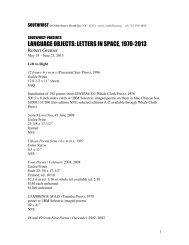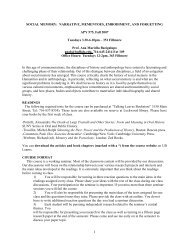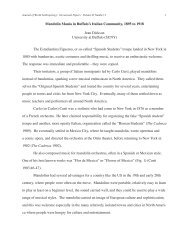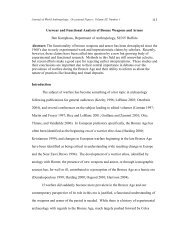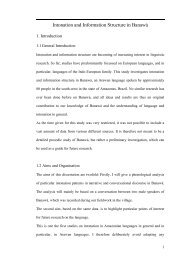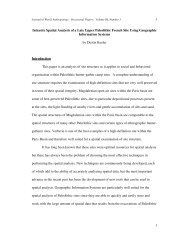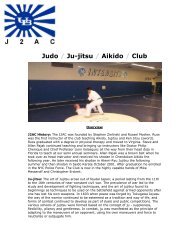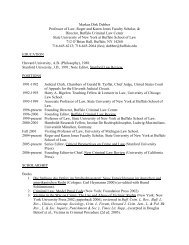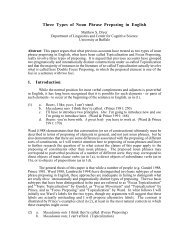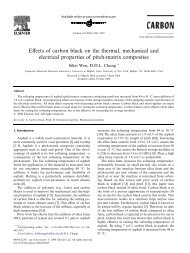Electrophysiological Evidence for Sentence Comprehension - Wings
Electrophysiological Evidence for Sentence Comprehension - Wings
Electrophysiological Evidence for Sentence Comprehension - Wings
Create successful ePaper yourself
Turn your PDF publications into a flip-book with our unique Google optimized e-Paper software.
software was used. The caps employed standard electrode mounting based on 10-20<br />
system. Recordings were referential and an average reference was used as suggested by,<br />
<strong>for</strong> example, Picton et al. (2000).<br />
Continuous EEG signal was recorded from each participant. The A/D conversion rate<br />
was set on 1000 Hz with the resolution of 22 bits (maximal values <strong>for</strong> the equipment).<br />
Notch filter was used (50 Hz). High pass filter was set on 0.1 Hz with 6 dB/octave slope<br />
(minimal values) while the low pass filter was usually set on 70 Hz. However, sometimes<br />
this value was lowered down to 50 Hz to account <strong>for</strong> the electromagnetic noise. The slope<br />
also varied from 6 dB/octave to 12 Db/octave, depending on the recording conditions in<br />
that moment. NeuroScan eye-blink reducing software based on linear derivation was used<br />
to reduce eye-blinks. Movement artifacts or parts of the recordings too contaminated with<br />
noise were rejected in order to obtain a clear data set.<br />
The continuous EEG signal was epoched off-line. The epoched interval was -100 to 1000<br />
ms around the trigger. The epoched signal was then averaged. After averaging, baseline<br />
correction was per<strong>for</strong>med with the pre-stimulus interval taken as the baseline. Finally, a<br />
smoothing function (available in the Edit software) was applied if necessary, depending<br />
on the high frequency noise still present in the average.<br />
84




